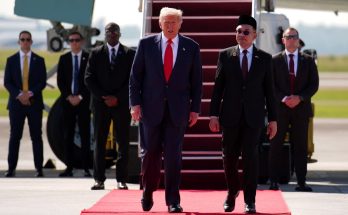It’s sad that meat-ban and other original agenda-points of the ‘Hindutva brigade’ should be allowed to derail the good work seemingly being done, or continued to be promised by Prime Minister Narendra Modi. It provides fodder for criticism of the Prime Minister in the social media circuit from the ridiculous to a very serious level, which surpasses corruption charges and jokes against the Manmohan Singh government through all those long months leading to Elections-2014.
The Hindutva agenda is no more linked to polls, the upcoming Bihar Assembly elections included. If anything, under the Modi leadership, soft and hard ‘Hindutva’ has not got the kind of official ‘blessings’ and ‘acknowledgement’ that it had actually got instead under lasy BJP Prime Minister Atal Behari Vajpayee. Instead, the reverse may be the truth, to the point.
Both during the ‘Ayodhya demolition’ and afterward, if not earlier, Vajpayee had projected a soft exterior. But ahead of every Parliament session that he faced as Prime Minister, barring the last one, he would drop a mini-bomb on one ‘Hindutva’ issue or the other. It would ensure that the particular session was ruined, but for the last day, when together with the Congress, they would pass some urgent bills and resolutions without any discussion or debate worth the name.
In the Opposition through P. V. Narasimha Rao’s five years in office earlier, the BJP ensured precisely as much by a slanging match in session after session on one issue or the other. It was no different for UPA-II, but this time round there was some spice in the meat, in the form of 2-G and CWG, ‘Team Anna’ and Baba Ramdev, and the way PM Singh handled, or mishandled – with predictable and at times unconvincing fumbling that the bureaucrat-politician was not known for in his first innings.
India ‘not shining’
With his moderate image and a host of regional parties contributing rather excessively, and at their own electoral cost to the BJP kitty, the party led by the Vajpayee-Advani duo and vintage could muster only an average one-third of the total 542 seats in Parliament, in the successive and successful polls of 1998 and ’99. Vajpayee’s was a mandate for ‘change’, with the BJP pleading with the voters to “give us a chance”, for three elections in succession. But their India did not ‘shine’ in the 2004 polls, as much as the late Pramod Mahajan had wanted Indians to believe.
Narendra Modi is a different kettle of fish. He came to power with the unforgettable image of a ‘Hindutva’ hard-liner. But his mandate was not on ‘Hindutva’, it was on whatever had passed for the ‘Gujarat model’ of development. In the absence of a political vehicle that could carry him through, and in his blind-folded approach to city-based, IT-centric development, Andhra Pradesh’s Nari Chandrababu Naidu would not only lose his national hopes but also the chief minister’s job in an earlier era. Modi took development to Gujarat’s rural areas, too, and the Indian voter in 2014 believed that he would replicate the Gujarat model on a national scale as well.
To the extent, PM Modi is not talking tough on ‘Hindutva’, it is good for the nation, the party and the politics of the person, too. But he has not stopped the Sakshi Maharaj-s of the ‘Sangh parivar’ from doing so. Where he did intervene it was too little, too late, not that he did not know. With the result, even his efforts at ‘accommodating’ the PDP in Jammu and Kashmir came to be seen not as a honourable and unprecedented effort at mainstreaming the hard-line party in the eternally troubled border State, but only as one more sleight-of-arm power-tactic.
Voter is the master, still…
For any prime minister in his place, barring possibly Jawaharalal Nehru in and from a different era, Modi has been successful in having an extended honeymoon with the voter. This, despite the eternally critical and even more pessimistic social media, which his BJP had successfully used to demolish Manmohan Singh’s ‘Mr Clean image’ and trial-tested against Lalu Yadav in Bihar, to whatever extent possible in Bihar, a decade or so ago. Yet, the potency and potential remain.
The 2014 polling figures from across the country showed that the ‘Modi card’ sold even among the minorities, who were unwilling to trust the ‘moderate’ Vajpayee. Even among the majority Hindu voters, ‘Hindutva’ did not sell enough. And the Vajpayee-Advani duo only had their long innings as the eternally troublesome Opposition leaders to market. Modi had the ‘Gujarat model’ development even to cloud and cover the ‘Gujarat riots’. He did not ask the Indian voter for a ‘chance’, but that still is what the Indian voter has given him – and with that the BJP, too.
Independent of the colour and caste of the voter, all of India ahead of 2014 polls needed jobs and welcomed development. They wagered on Modi the ‘development man’, and have taken a huge risk. For him now to let soft Hindutva to permeate through the pores of political administration would be going against his mandate, to say the least. Meat-ban, and school-level education on Hindu religious icons and texts, starting with BJP-ruled states, may be an arguable point on ‘cultural nationalism’ defying religious barriers, but these are also states where anti-incumbency is waiting to have its electoral say, any time soon.
As the PM candidate, Modi too had not made any reference whatsoever to any one of the traditional Hindutva agendas, anywhere any time. It’s now for Modi and the BJP to decide, how far to let the ‘Hindutva brigade’ to have its say, and have its way. An air of permissiveness, where goons parading menacingly in the name of religion could get away with hurting otherwise innocent youth is only a mirror-image of what the BJP had always condemned in states like Jammu and Kashmir – and rightly so.
It is not even about numbers. It is as much against the great Indian ethos and culture that these goons seek to glorify and ‘revive’ – but in ways that could be counter-productive. The BJP should recall how long a distance they had to walk after ‘dual membership’ destroyed the party almost entirely in the original ‘Janata parivar’ and how the constant ‘Hindutva-centric’ bickering that PM Vajpayee flagged had affected the party more recently. It cannot afford to fail itself a third time.
For his part, PM Modi, too, cannot fail the party that has made him what he is today — and allow his calibrated silence to destroy the party and India of his own dreams! If nothing else, he would need all the energy and all the focus that he can muster, away from his early and inevitable global outing, to concentrate on India, and India alone, if he has to take India to where he had promised the voter, if only for the latter to vote for him and the party a second time, and in succession.
For, he who did not forgive the Congress Party of the Independence vintage, and he who has not forgiven the ‘Messiah of modern-day Indian developmental story’ in Manmohan Singh would forgive none else, Modi included! Wavering and faltering, both the BJP leadership of the late Seventies and the Vajpayee prime ministership took their time to discipline the trouble-makers from within, but by the time they became decisive, the voter had become even more decisive.
(The writer is Director, Chennai Chapter of the Observer Research Foundation, the Indian public-policy think-tank, headquartered in New Delhi).
(The views expressed in this article are solely those of the author. This article has been written for India Writes Network).
Author Profile
Latest entries
 DiplomacyDecember 28, 2015Maldives 2016: At multiple cross-roads
DiplomacyDecember 28, 2015Maldives 2016: At multiple cross-roads DiplomacyDecember 23, 2015Maldives: Adopting the China model?
DiplomacyDecember 23, 2015Maldives: Adopting the China model? DiplomacyDecember 7, 2015Chennai floods: Has it anything to do with climate change?
DiplomacyDecember 7, 2015Chennai floods: Has it anything to do with climate change? DiplomacyNovember 13, 2015Maldives: End of emergency, what next?
DiplomacyNovember 13, 2015Maldives: End of emergency, what next?








